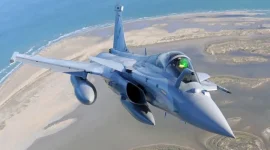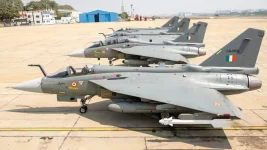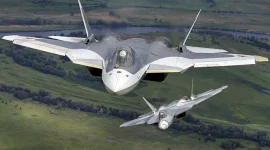- Views: 3K
- Replies: 36
In a significant development for India's indigenous fighter jet program, the Indian Air Force (IAF) has expressed strong support for a collaborative approach to developing the engine for the Advanced Medium Combat Aircraft (AMCA).
While the ultimate goal remains complete indigenous production, the strategy now involves partnering with a foreign Original Equipment Manufacturer (OEM) to design the engine's core, while Indian scientists and engineers focus on developing the low-pressure (LP) side.
This strategic shift aims to leverage international expertise for the more complex aspects of jet engine development, specifically the combustor core and high-pressure components, which are critical for performance and efficiency.
By partnering with a foreign OEM, India can benefit from advanced technologies and accelerate the AMCA program while simultaneously building its own manufacturing and design capabilities.
The IAF emphasizes a "learn alongside" approach, where Indian engineers will gain valuable insights and skills through collaboration with the foreign entity. This knowledge transfer is crucial for India to develop its own expertise in critical areas of jet engine technology.
A key aspect of this partnership is the commitment to achieving 100% localization of the core engine in the long term. This goal is vital not only for the AMCA program but also for the broader aerospace industry in India. It addresses several fundamental challenges:
- Material science: Developing the capacity to produce advanced materials that can withstand the extreme temperatures and pressures within a jet engine core is essential for reducing dependence on foreign supply chains.
- Manufacturing techniques: Mastering the intricate, precision manufacturing processes required for engine cores will elevate India's manufacturing sector and potentially benefit other industries.
- Technology transfer: Securing comprehensive technology transfer will enable India not only to produce the current generation of engines but also to drive future innovations in engine technology.
By starting with a joint venture for the core engine, India can overcome significant technological hurdles, learn from its partner, and gradually take over all aspects of engine production.
This decision has sparked discussions among defence analysts and on social media platforms like X, where there seems to be a consensus that developing a completely indigenous fighter jet engine within the required timelines for the AMCA Mk2 is a significant challenge.
This sentiment reflects an acknowledgment of existing knowledge gaps and the necessity of international collaboration to meet the demanding performance expectations of modern warfare.
By strategically leveraging foreign expertise while remaining committed to long-term indigenous development, India is taking a pragmatic approach to building a robust and self-reliant aerospace industry.




